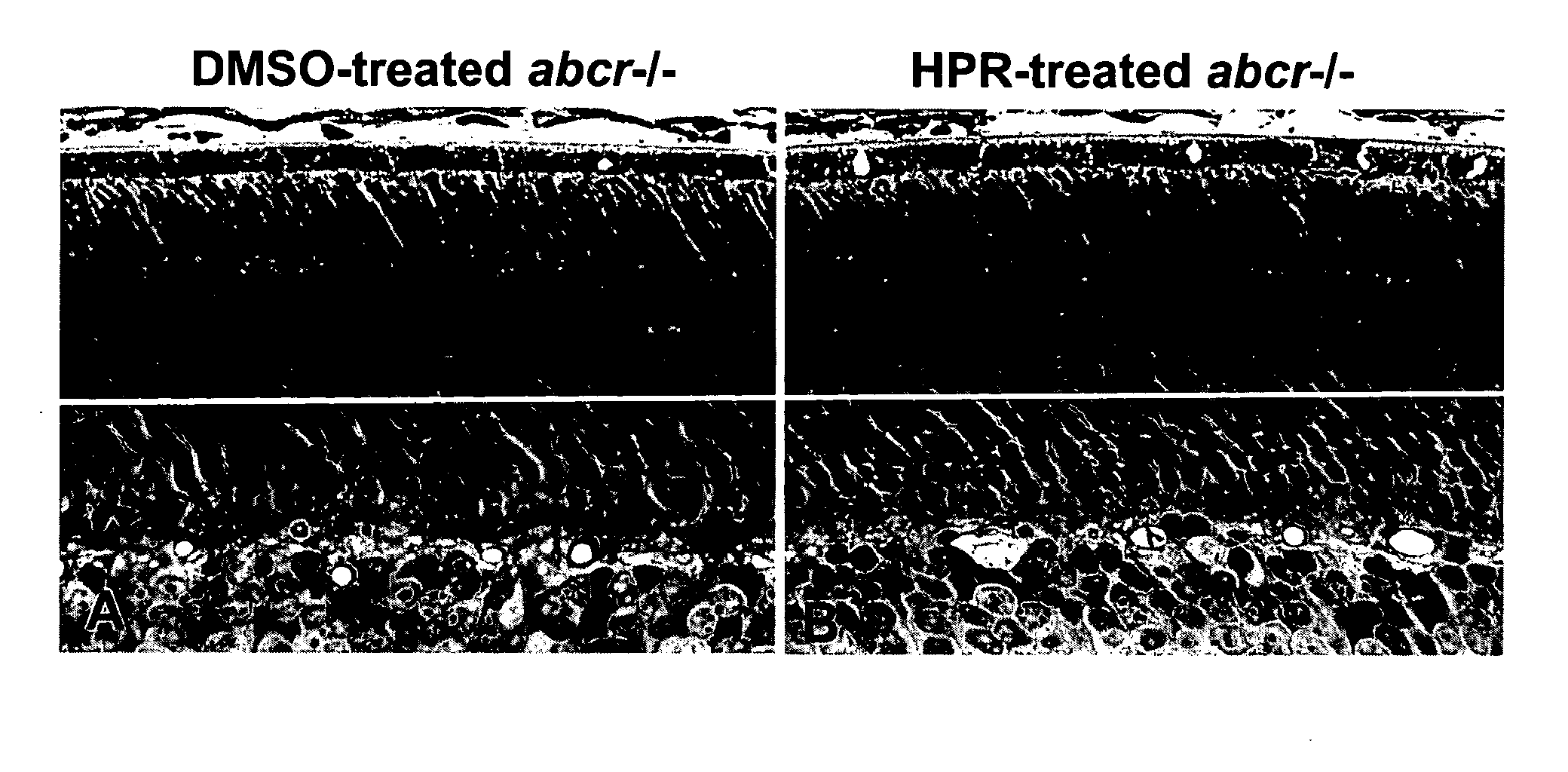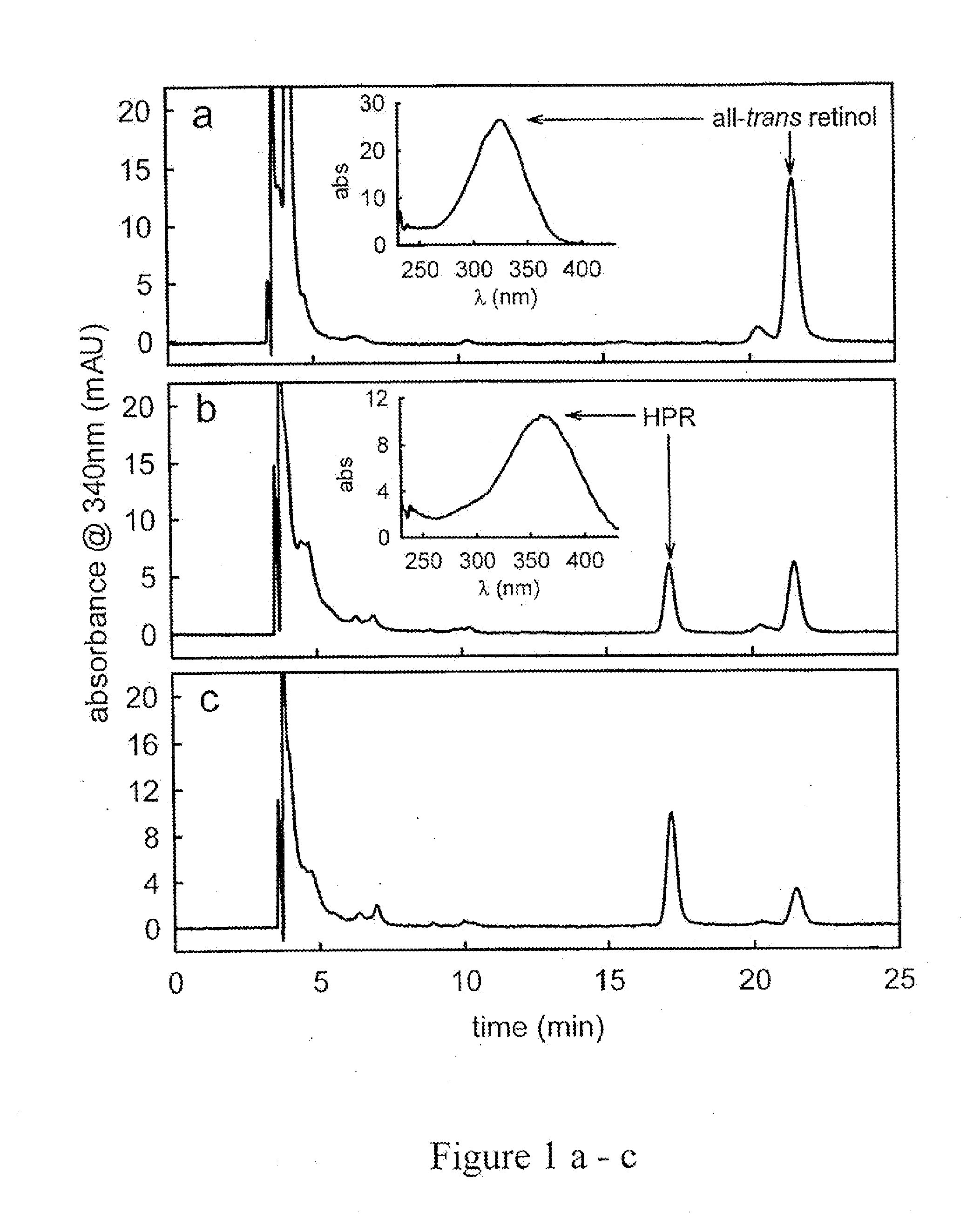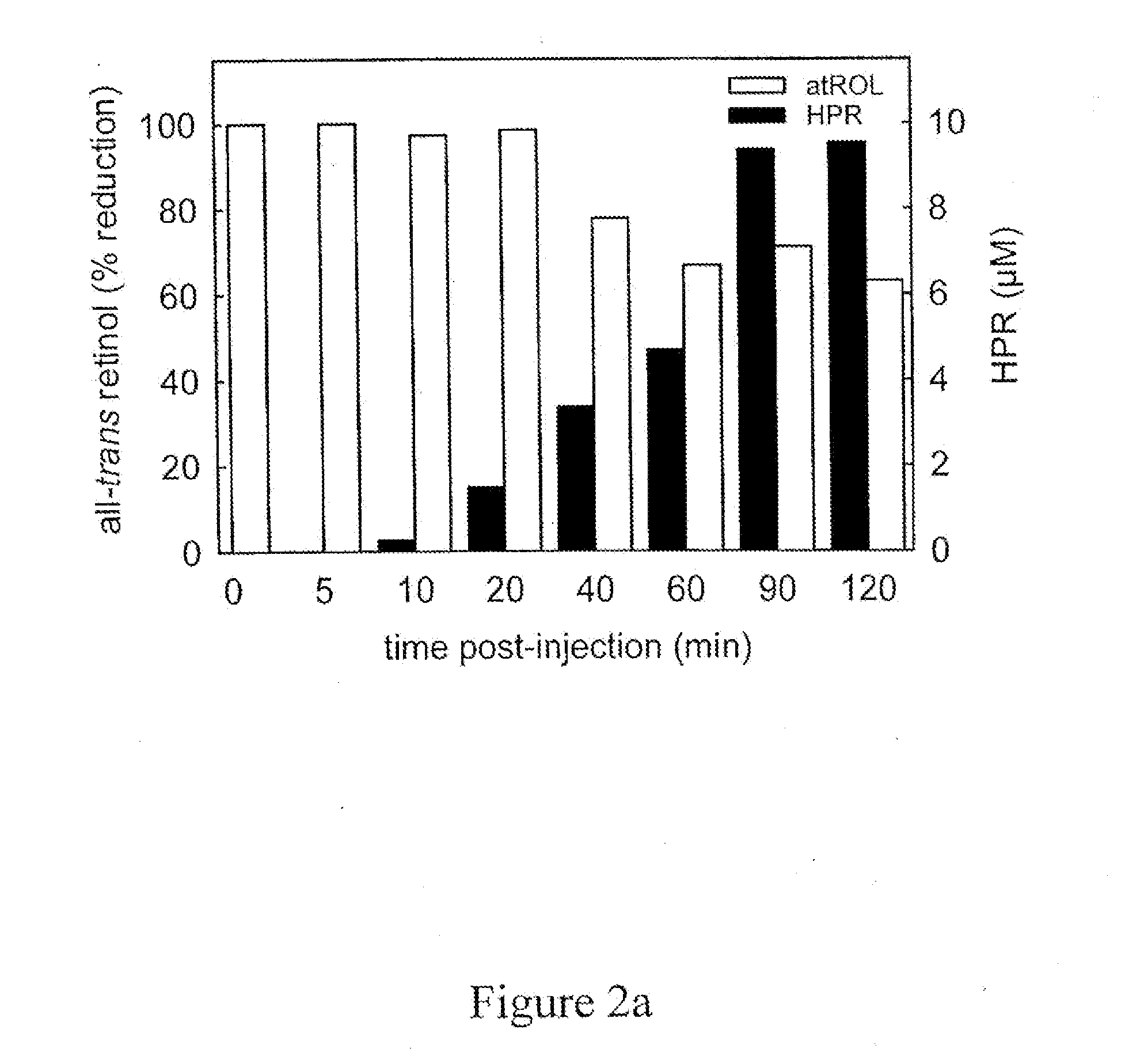Methods and compositions for treating ophthalmic conditions with retinyl derivatives
a technology of retinyl derivatives and ophthalmic conditions, applied in the field of ophthalmic conditions treatment, can solve the problems of drusen under the macula, adverse effects, and production of lipofuscin, and achieve the effect of reducing the formation or limiting the spread of geographic atrophy
- Summary
- Abstract
- Description
- Claims
- Application Information
AI Technical Summary
Benefits of technology
Problems solved by technology
Method used
Image
Examples
example 1
Testing for the Efficacy of Compounds of Formula (I) to Treat Macular Degeneration
[0242]For pre-testing, all human patients undergo a routine opthalmologic examination including fluorescein angiography, measurement of visual acuity, electrophysiologic parameters and biochemical and rheologic parameters. Inclusion criteria are as follows: visual acuity between 20 / 160 and 20 / 32 in at least one eye and signs of AMD such as drusen, areolar atrophy, pigment clumping, pigment epithelium detachment, or subretinal neovascularization. Patients that are pregnant or actively breast-feeding children are excluded from the study.
[0243]Two hundred human patients diagnosed with macular degeneration, or who have progressive formations of A2E, lipofuscin, or drusen in their eyes are divided into a control group of about 100 patients and an experimental group of 100 patients. Fenretinide is administered to the experimental group on a daily basis. A placebo is administered to the control group in the s...
example 2
Testing for the Efficacy of Compounds of Formula (I) to Reduce A2E Production
[0250]The same protocol design, including pre-testing, administration, dosing and toxicity evaluation protocols, that are described in Example 1 are also used to test for the efficacy of compounds of Formula (I) in reducing or otherwise limiting the production of A2E in the eye of a patient.
[0251]Methods for measuring or monitoring formation of A2E include the use of autofluorescence measurements of N-retinylidene-phosphatidylethanolamine, dihydro-N-retinylidene-N-retinyl-phosphatidylethanolamine, N-retinylidene-N-retinyl-phosphatidylethanolamine, dihydro-N-retinylidene-N-retinyl-ethanolamine, and / or N-retinylidene-phosphatidylethanolamine in the eye of the patient. Autofluorescence is measured using a variety of equipment, including but not limited to a confocal scanning laser opthalmoscope, see Bindewald, et al., Am. J. Opthalmol., 137:556-8 (2004), or the autofluorescence or absorption spectra measuremen...
example 3
Testing for the Efficacy of Compounds of Formula (I) to Reduce Lipofuscin Production
[0252]The same protocol design, including pre-testing, administration, dosing and toxicity evaluation protocols, that are described in Example 1 are also used to test for the efficacy of compounds of Formula (I) in reducing or otherwise limiting the production of lipofuscin in the eye of a patient. The statistical analyses described in Example 1 may also be employed.
[0253]Tests that can be used as surrogate markers for the efficacy of a particular treatment include the use of visual acuity and visual field examinations, reading speed and / or reading acuity examinations, measurements on the size and number of scotoma and / or geographic atrophic lesions, and the measuring / monitoring of autofluorescence of certain compounds in the eye of the patient, as described in Example 1.
PUM
| Property | Measurement | Unit |
|---|---|---|
| time | aaaaa | aaaaa |
| time | aaaaa | aaaaa |
| residence time | aaaaa | aaaaa |
Abstract
Description
Claims
Application Information
 Login to View More
Login to View More - R&D
- Intellectual Property
- Life Sciences
- Materials
- Tech Scout
- Unparalleled Data Quality
- Higher Quality Content
- 60% Fewer Hallucinations
Browse by: Latest US Patents, China's latest patents, Technical Efficacy Thesaurus, Application Domain, Technology Topic, Popular Technical Reports.
© 2025 PatSnap. All rights reserved.Legal|Privacy policy|Modern Slavery Act Transparency Statement|Sitemap|About US| Contact US: help@patsnap.com



